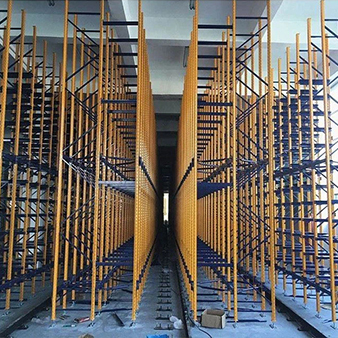Storage shelves can be classified according to the characteristics of the goods they are designed to store. This classification helps ensure that the storage solution is tailored to the specific needs of the items being stored. Here are several ways to classify storage shelves based on the characteristics of the goods:
These shelves are designed for storing large quantities of non-perishable goods, typically in a compact and space-efficient manner. Examples include warehouse pallet racking, push-back racking, and drive-in/drive-through racking.
2. Heavy-Duty Storage Shelves:
These shelves are built to support extremely heavy and bulky items, such as machinery, automotive parts, and industrial equipment. They often feature reinforced materials and support structures.
3. Light-Duty Storage Shelves:
Light-duty shelves are intended for smaller, lighter items, including office supplies, small electronics, and clothing. They are commonly used in offices, retail spaces, and homes.
4. Long and Oversized Item Storage Shelves:
These shelves are designed to accommodate items that are longer or bulkier than standard inventory. Examples include cantilever racks and specialized lumber racks.
5. Small Parts and Bin Storage Shelves:
These shelves are equipped with bins, dividers, or drawers to organize and store small parts, tools, or components efficiently. They are common in manufacturing and automotive industries.

6. High-Density Storage Shelves:
High-density storage solutions, like mobile shelving or mezzanine systems, maximize space by compactly storing a large volume of items, making them suitable for archives, libraries, and warehouses.
7. Cold Storage Shelves:
Cold storage shelves are designed to withstand low-temperature environments, making them ideal for storing perishable goods in refrigerated or freezer rooms, such as in the food industry.
Retail display shelves are designed for product presentation and customer access in retail environments. They prioritize aesthetics and organization.
9. Food and Beverage Storage Shelves:
These shelves are designed to meet the specific requirements of the food industry, including compliance with food safety regulations, ease of cleaning, and corrosion resistance.
10. Automotive Parts Storage Shelves:
- Designed to store various automotive parts, these shelves often include features for organizing and accessing items like tires, engine components, and tools.
11. Electronics Storage Shelves:
- These shelves are designed for storing electronic components, devices, and equipment. They may include ESD (electrostatic discharge) protection for sensitive electronics.
12. Library and Media Storage Shelves:
- These specialized shelves are designed to store books, media, and educational materials efficiently. They prioritize accessibility and organization.
13. Pharmaceutical and Medical Storage Shelves:
- These shelves are tailored to the storage needs of pharmaceuticals and medical supplies, often featuring adjustable configurations and easy access for healthcare professionals.
14. Hazardous Materials Storage Shelves:
- Designed for the safe storage of hazardous materials and chemicals, these shelves often include containment features and comply with safety regulations.
15. Clothing and Apparel Storage Shelves:
- These shelves are intended for the storage of clothing, apparel, and fashion items. They may include features for hanging garments and organizing accessories.
16. Warehouse Pallet Shelves:
- Specifically designed for storing goods on pallets, these shelves are common in distribution centers, manufacturing facilities, and warehouses.
Classifying storage shelves based on the characteristics of the goods being stored helps businesses select the most appropriate shelving solution to optimize organization, accessibility, and space utilization. It's important to choose storage solutions that match the specific needs and properties of the items you are storing.